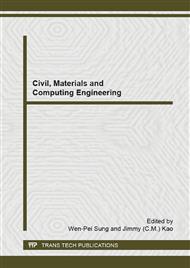p.484
p.488
p.492
p.498
p.502
p.506
p.510
p.515
p.522
Regional Allocation for Carbon Emissions in Power System Based on Carbon Emission Efficiency and Energy Structure
Abstract:
China has become the largest carbon emitter in the world since 2008 for its coal dominated energy structure, which has attracted both economic and political attention from international society. This paper proposes a responsibility sharing principle for carbon emissions considering carbon emission efficiency and energy structure, which tries to promote the regional cooperation for carbon reduction among different regions on the domestic level. The case studies on China’s six-region carbon flow network prove the effectiveness of proposed sharing principle.
Info:
Periodical:
Pages:
502-505
Citation:
Online since:
December 2014
Authors:
Price:
Сopyright:
© 2015 Trans Tech Publications Ltd. All Rights Reserved
Share:
Citation:


